
Staghorn ferns growing on tree, Kahana Valley Staghorn fern, Plants, Garden
Staghorn Ferns grow on tree trunks in their natural habitat of the rainforest and are shaded by the leaves of the taller trees overhead, receiving irregular streaks of sunlight through the movement of the foliage canopy above. From this, it's easy to see why Staghorn Ferns do best in partial shade and bright, indirect light..

How to Grow a WallMounted Staghorn Fern Besgrow At the Root of Healthier Plants
Staghorn ferns, known by the botanical name Platycerium bifucatum, are unique plants that look like no other common houseplant. Their fronds consist of basal fronds, which are small, flat leaves that cover the roots, and foliar fronds, which are the more upright foliage which has a shape that resembles the horns of an elk or stag. These fronds.

Apotheca Flowers Plants Giant Staghorn Fern ApothecaFlowers
Staghorn ferns are surprisingly cold-hardy, but for optimal growth, the temperature should not be allowed to drop below 50 degrees or above 100 degrees. Staghorn ferns can be placed outdoors when temperatures stay within this range. Be extra careful to keep staghorns out of direct sun and well-watered when hung outdoors.

Live Rare Platycerium Netherlands Staghorn Fern USA SELLER Etsy
Staghorn Ferns, or Platycerium bifurcatum, refers to a commonly cultivated group of ferns in the genus Platycerium. Staghorn Ferns are epiphytes, which means that in the wild, they grow on other plants and objects for support, such as on tree trunks or branches. Other examples of common epiphytic indoor plants are hoyas and bromeliads.

Vriksha Nursery Stag horn fern stunning!!!
Staghorn Fern Information. There are 17 different species of staghorn fern (Platycerium alcicorne) - which in addition to common staghorn fern, go by a number of other common names that include elkhorn fern and antelope ears.Each one has antler-like foliage as well as a flat, basal leaf. The flat leaves are infertile and turn brown and papery with age.
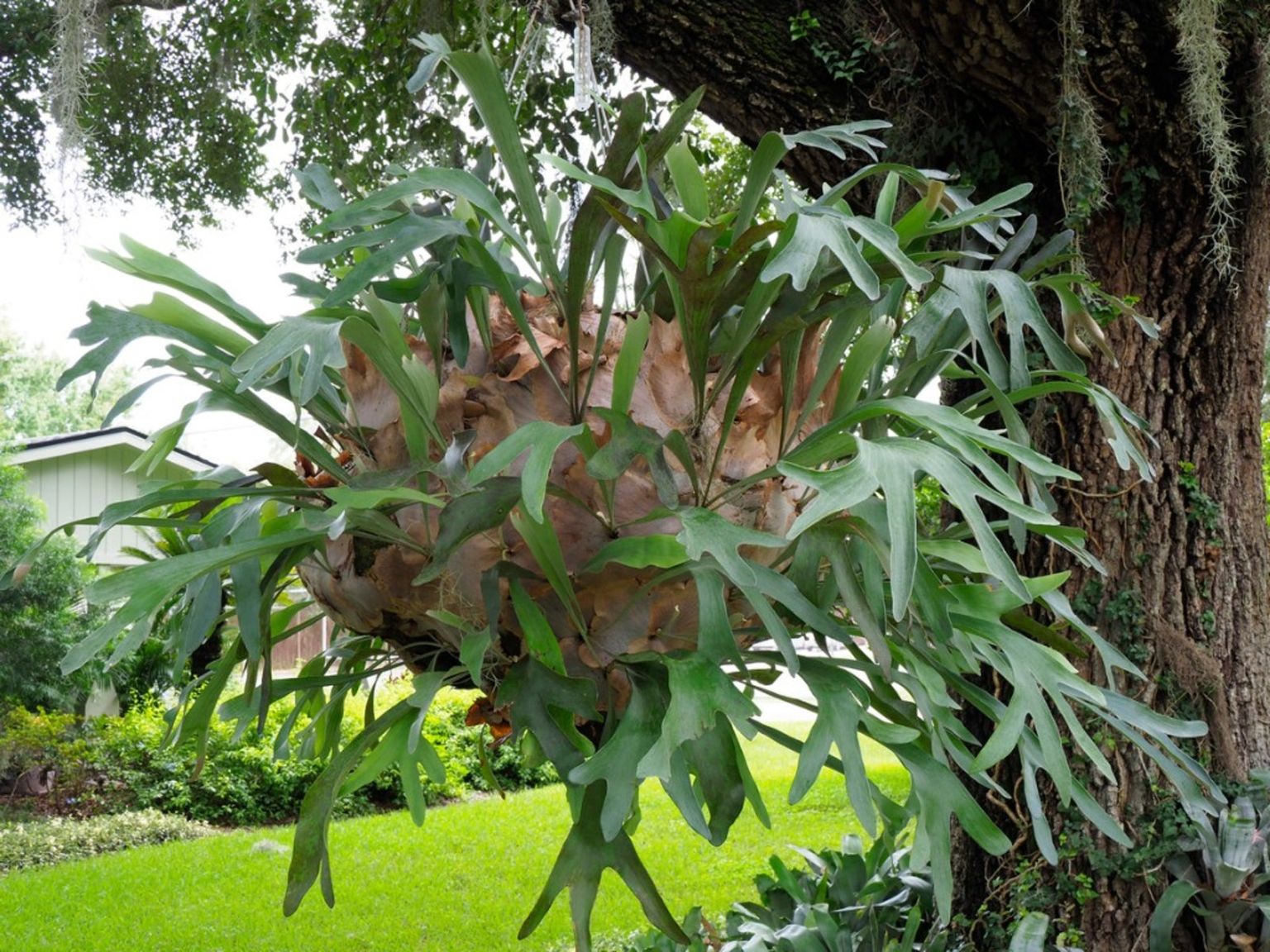
Staghorn Fern Disease Symptoms Tips On Dealing With Sick Staghorn Ferns
Staghorn ferns have different types of fronds, including basal fronds and fertile fronds. Basal fronds are the shield-like structures that anchor the plant to its growing surface, while fertile fronds are responsible for producing spores. Maintaining the health of both types of fronds is essential for the overall well-being of the plant.
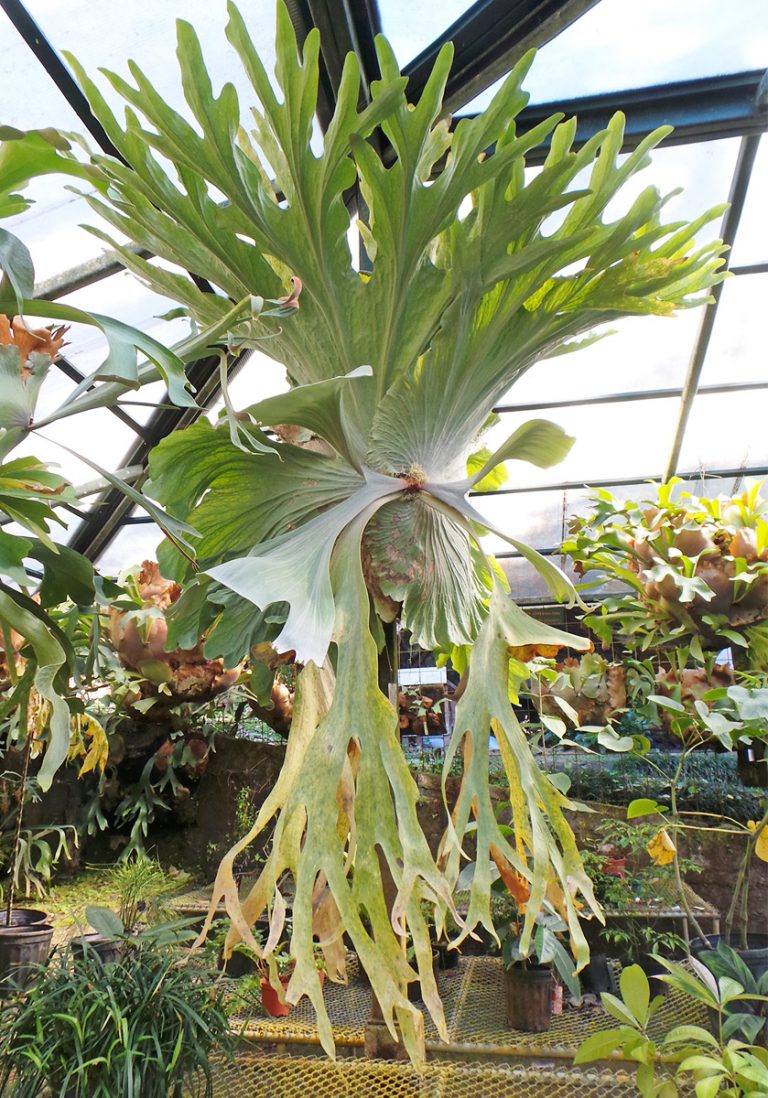
Staghorn Fern, Platycerium bifurcatum Wisconsin Horticulture
To grow staghorn ferns in baskets, begin by lining the basket with at least an inch (2.5 cm.) of moistened sphagnum moss, then fill the basket with a very well drained potting mix, such as one containing a mixture of equal parts bark chips, sphagnum moss, and regular potting mix. Staghorn ferns in baskets do best in large baskets measuring at.

Pin on Our Nursery
Unlike most staghorn ferns, this species can survive a brief drop in temperature to 30 degrees F. (-1 C.). Several varieties are available. Platycerium superbum is more difficult to care for and can be hard to find, but it has a striking appearance and is sought after by fern collectors. It produces large, light-green fronds that extend both.
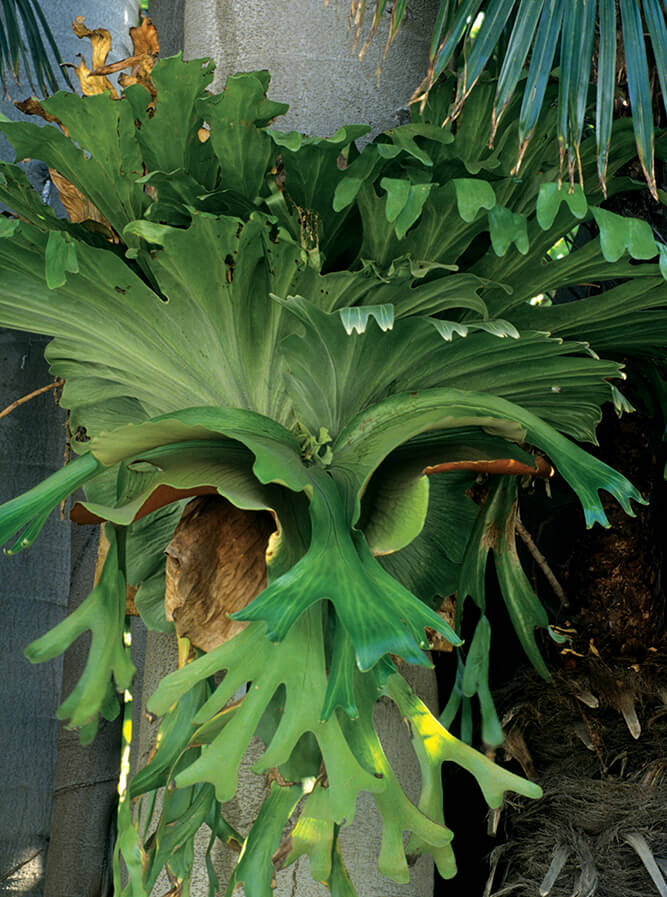
Staghorn Fern San Diego Zoo Animals & Plants
Staghorn ferns can survive in a wide range of temperatures, but they will grow better at higher ranges. The staghorns should be kept between 60 and 90 degrees Fahrenheit during the day time hours or when it is light outside. At night bring them down to 55-60 degrees with some humidity for optimal growth.
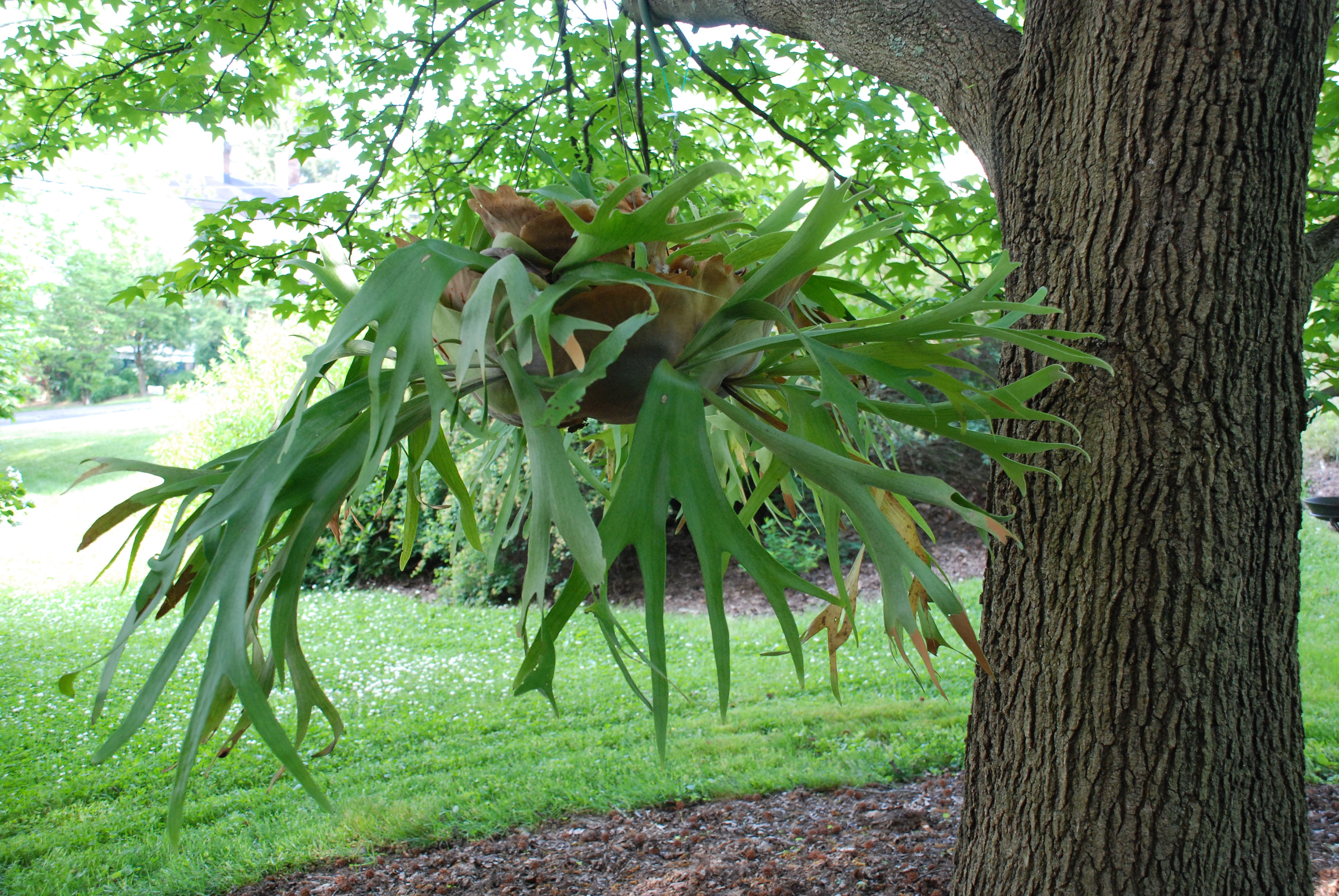
Care Of Staghorn Ferns What Grows There Hugh Conlon, Horticulturalist, Professor, Lecturer
Staghorn ferns used to be harder to find, but Platycerium bifurcatum, one variety of this plant, has become easy to propagate and therefore they are getting more common. What is so special about staghorn ferns? Staghorn ferns are unique with their 2 types of fronds and cool wall mounts. This makes them really appealing to houseplant collectors!
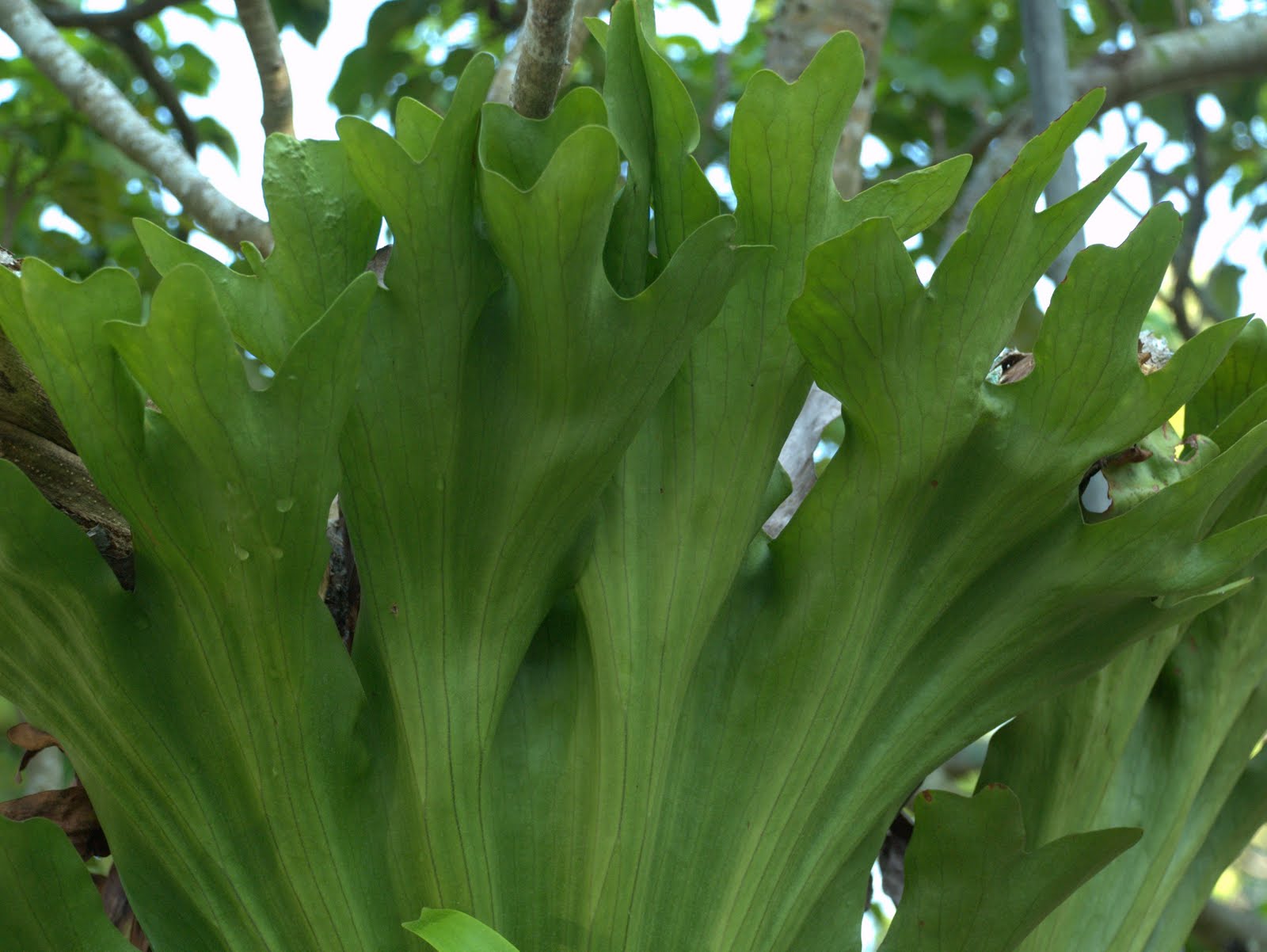
My little vegetable garden Rosiah's garden featuring staghorn fern
Types of Staghorn Ferns. Elkhorn fern (P. alcicorne) produces domed shield fronds that hug the roots, and slender antler fronds with lots of small branches at the tips.; American Staghorn fern (P.

Staghorn Fern, Platycerium bifurcatum Wisconsin Horticulture
Free Shipping Available. Buy on eBay. Money Back Guarantee! Looking for Great Deals? Find it all on eBay with Fast and Free Shipping.
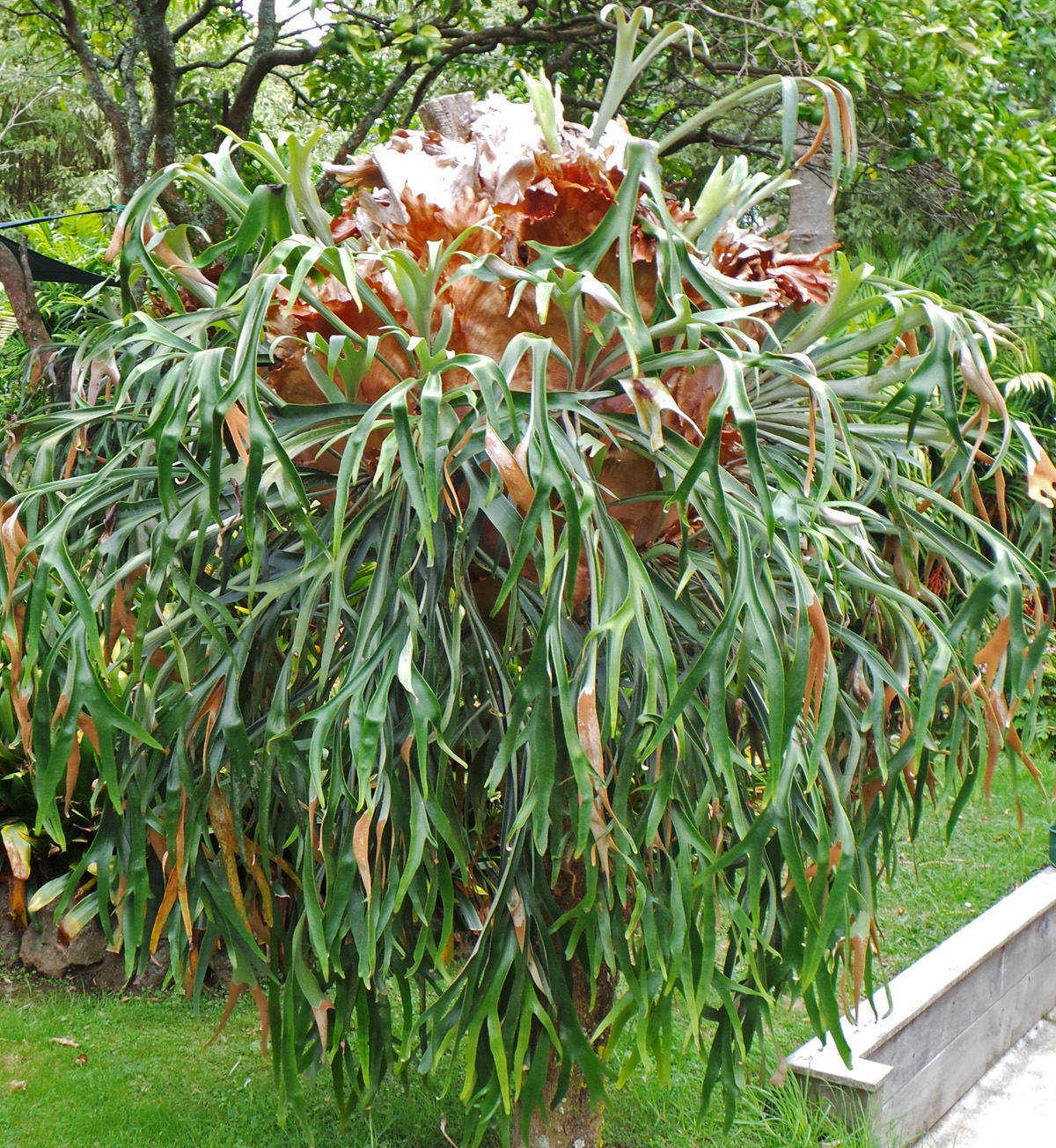
Staghorn Fern, Platycerium bifurcatum Wisconsin Horticulture
Tamp the spores into the soil and moisten them lightly with a spray bottle. Keep the soil moist, and within 3 to 6 months you'll have new ferns. Transplant staghorn ferns when they have 2 true leaves. To propagate from pups or division of a parent plant, examine your parent plant.
Brenda's "Texas Wild" Garden Staghorn Fern
1. Staghorn plants arrive in a ponga pot. Pull plant out of pot and shake off all excess matter. If Staghorn is from a mother specimen, reach behind the plate, which is the sterile frond shield, and remove with some roots on the frond. 2. Take sphagnum moss and put a handful onto the mounting board, a wooden frame. 3.
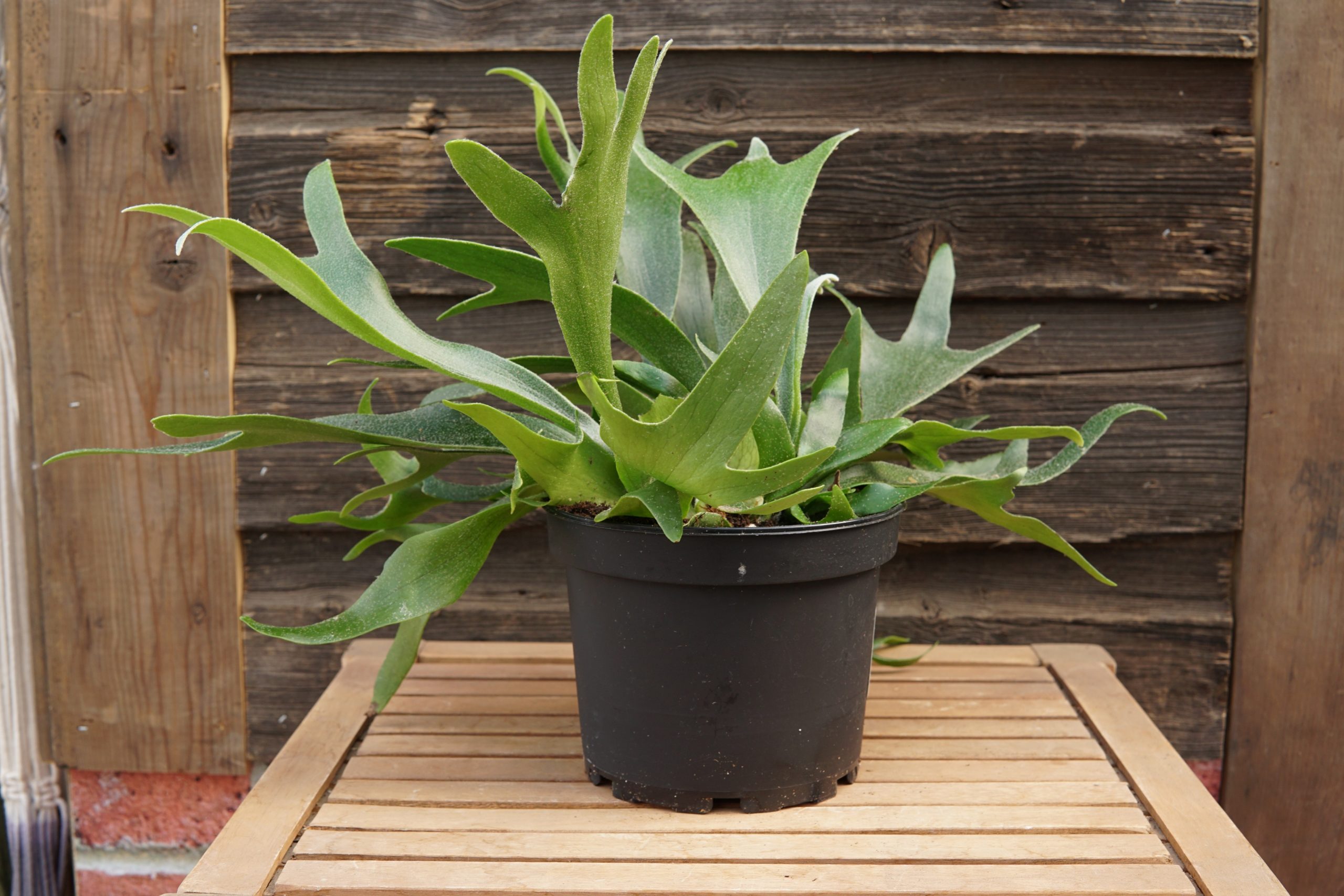
Staghorn Fern • Kiwi Nurseries Ltd
Place your pruned fern inside the circle of nails. Gently pull your staghorn fern from its pot or container and place the whole root system in the middle of the nails. Prune the roots back a little with scissors or shears so that they fit inside the circle. [20] 6. Cover the base of the fern with peat moss.
:max_bytes(150000):strip_icc()/grow-platycerium-species-1902725-6-d25355ac70fa420abb8ed76854190c1d.jpg)
Staghorn Fern Plant Care & Growing Guide
Staghorn Ferns. Update: According to the UF/IFAS Assessment of Non-native Plants in Florida's Natural Areas, gardeners should plant staghorn fern with caution and manage its growth to prevent escape. Once an uncommon plant find, staghorn fern (Platycerium spp.) is now quite popular and widely available. Beginner (or easily-distracted) gardeners.